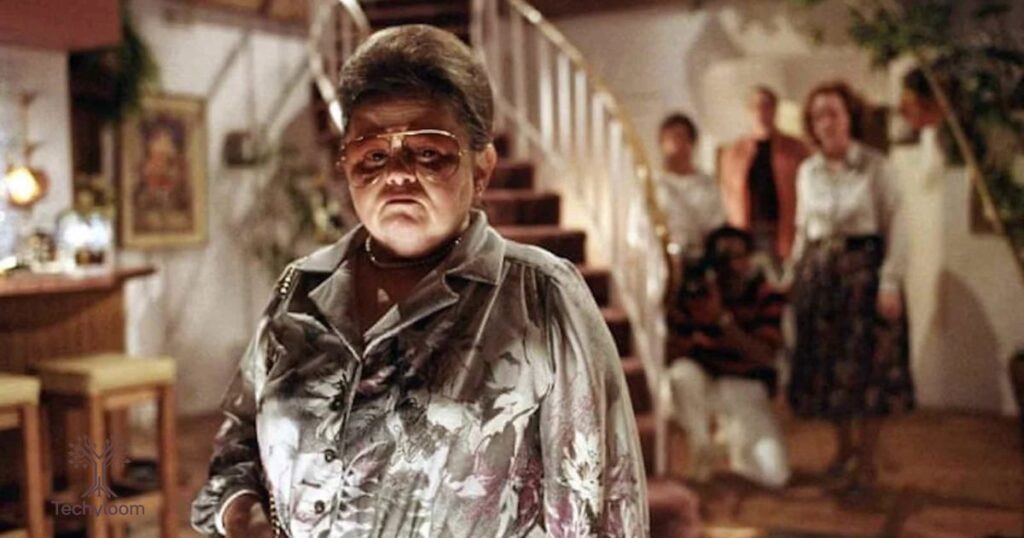In the realm of horror cinema, few films have left as indelible a mark as the 1982 classic, “Poltergeist.” Directed by Tobe Hooper and produced by Steven Spielberg, this supernatural masterpiece continues to captivate audiences with its blend of gripping storytelling and groundbreaking special effects.
However, lurking beneath the surface lies a disturbing revelation: real human skeletons were used as props during the film’s production. In this blog post, we’ll delve into the chilling details behind this decision, explore the ethical considerations it raises, and examine its impact on the world of filmmaking.
The Revelation Behind The Real Skeletons
Deep within the narrative of “Poltergeist,” amidst its portrayal of suburban terror and supernatural disturbances, lies the unsettling fact that the filmmakers opted to use real human skeletons as props. This decision, particularly evident in the film’s climactic pool scene, starkly contrasts the film’s special effects wizardry with a grim slice of reality.
The production team, seeking cost-effective solutions for high-impact visual scenes, sourced genuine human skeletons, arguing that the cost of artificial replicas far outweighed that of the real articles.
Unveiling the Macabre Truth
The use of real skeletons in “Poltergeist” was not unique to the film industry at the time. However, it garnered significant attention due to the film’s high profile and the subsequent scrutiny it attracted. This revelation sparked a wave of controversy, prompting discussions about the ethical implications of using human remains for entertainment purposes.
The Pool Scene: A Haunting Reminder
One of the most memorable scenes in “Poltergeist” is the climactic confrontation in the family’s swimming pool, where JoBeth Williams’ character faces off against spectral horrors. Little did viewers know, the skeletons lurking beneath the water’s surface were not mere props—they were once living beings, now repurposed for cinematic effect.
Ethical Considerations and Industry Standards
The decision to use real skeletons in “Poltergeist” raises profound ethical questions about the limits of artistic expression and the moral responsibilities of filmmakers.
At the heart of this debate is the respect owed to the deceased, whose remains were repurposed for entertainment without consent. This act, while legally ambiguous at the time, predates the comprehensive ethical guidelines and standards that have since been developed in the entertainment industry.
The Moral Quandary
Using real skeletons in a film blurs the line between art and exploitation. While some argue that it adds a level of authenticity to the storytelling, others contend that it violates the dignity of the deceased and perpetuates a culture of commodifying human remains for entertainment.
Evolution of Ethical Standards
Since the release of “Poltergeist,” the entertainment industry has undergone significant ethical evolution. Comprehensive guidelines now govern the depiction and treatment of sensitive materials, including human remains. Filmmakers are increasingly held accountable for upholding ethical standards and respecting the dignity of all individuals involved in the production process.
The Legacy of “Poltergeist”
The “Poltergeist” incident serves as a pivotal example of how industry practices have evolved, pushing today’s filmmakers to consider the ethical implications of their creative decisions more carefully. It underscores the importance of balancing artistic vision with ethical responsibility and respecting the rights and dignity of all individuals, both living and deceased.
Recommended Blog: Social Media App Banality Of Life: A Comprehensive Overview
Impact on Special Effects and Authenticity

The use of real skeletons in “Poltergeist” also sheds light on the lengths filmmakers historically went to achieve authenticity and realism within the constraints of available technology. Before the era of CGI and advanced animatronics, practical effects were the cornerstone of cinematic realism. Filmmakers often had to employ creative—and sometimes ethically questionable—methods to captivate their audience.
Pushing the Boundaries of Realism
“Poltergeist” is a prime example of this pursuit of visual authenticity intersecting with ethical considerations. The decision to use real skeletons added a macabre realism to the film, heightening the sense of horror and unease for viewers. However, it also raised ethical dilemmas regarding the treatment of human remains and the boundaries of acceptable filmmaking practices.
The Evolution of Special Effects
Since the release of “Poltergeist,” advancements in technology have revolutionized the world of filmmaking. CGI and sophisticated animatronics have rendered the need for real human remains obsolete, offering filmmakers vast creative possibilities without the ethical implications associated with using genuine skeletons.
Balancing Realism and Responsibility
While the use of real skeletons may have contributed to the authenticity of “Poltergeist,” it also serves as a cautionary tale for filmmakers. It highlights the importance of striking a balance between visual realism and ethical responsibility, ensuring that creative decisions do not come at the expense of human dignity.
Modern Filmmaking and Ethical Practices
Today, the landscape of filmmaking has dramatically transformed, with advances in technology and heightened ethical standards reshaping how stories are brought to life on screen. Filmmakers now operate under rigorous guidelines governing the depiction and treatment of sensitive materials, including human remains.
The Rise of CGI
CGI has emerged as a powerful tool for filmmakers, offering unprecedented flexibility and control over visual effects. With CGI, filmmakers can create lifelike scenes without the need for real-world props, eliminating the ethical implications associated with using real skeletons.
Embracing Ethical Standards
The industry’s ethical evolution is evident in the increased emphasis on respecting human dignity and upholding ethical standards. Filmmakers are held accountable for their creative decisions, and the use of real human remains is generally considered unacceptable in modern filmmaking.
A Cultural Shift
The progression towards more conscientious practices reflects a broader cultural and professional commitment to ethical filmmaking. As audiences become more aware of the ethical implications of creative decisions, filmmakers are under increasing pressure to uphold ethical standards and treat all individuals involved in the production process with respect and dignity.
Recommended Blog: Javaughn J Porter Impact On The Tech World: A Deep Dive Into His Contributions
Conclusion
The real skeletons used in “Poltergeist” reveal a fascinating but unsettling aspect of filmmaking history. They remind us how technology, creativity, and ethics intersect in the industry. As filmmakers continue to face these challenges, “Poltergeist” serves as a reminder to prioritize authenticity while respecting ethical boundaries. It’s a lesson in balancing cinematic excellence with integrity and respect for all involved.








